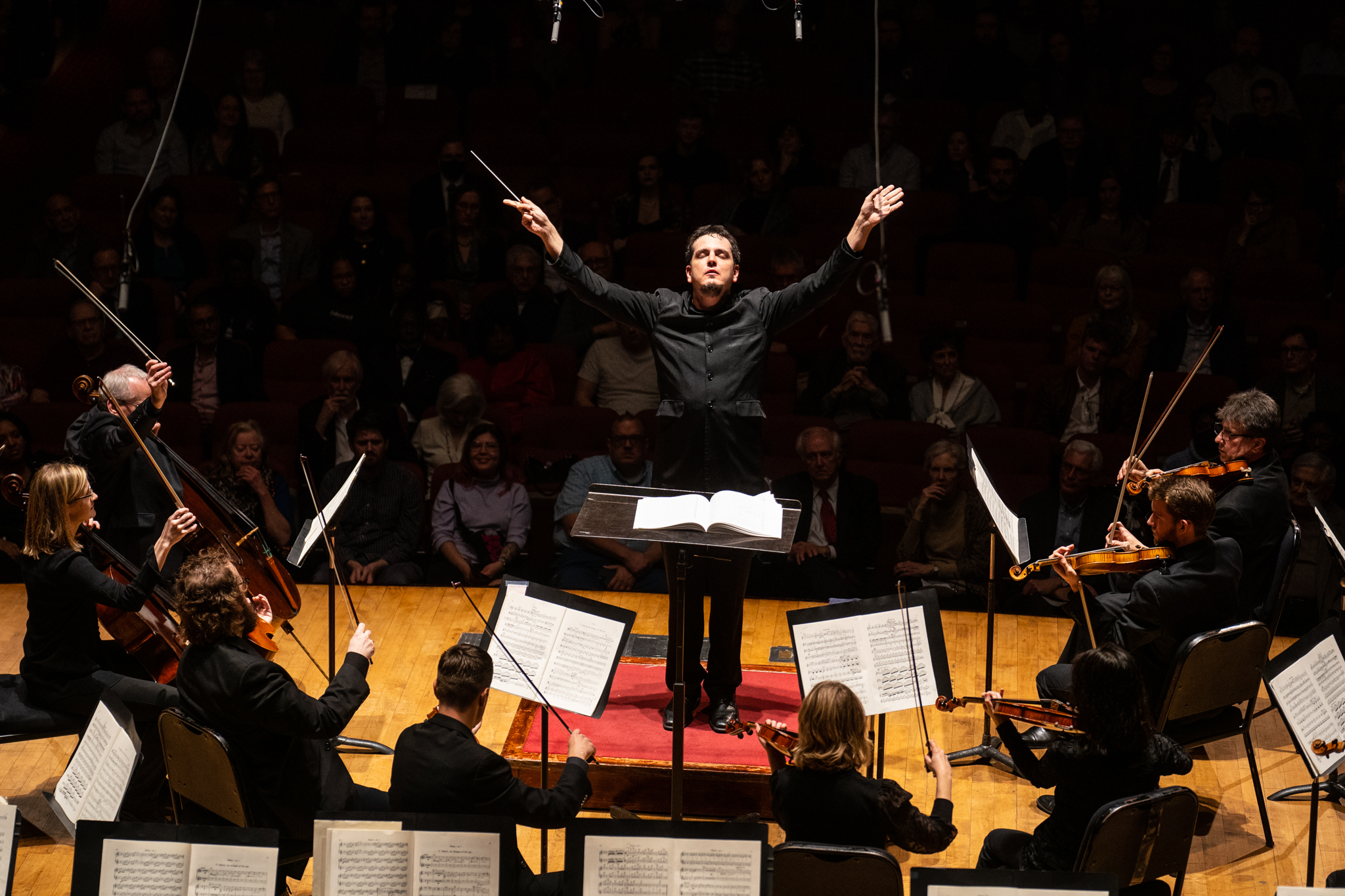
STRAUSS
Vier letzte Lieder (Four Last Songs)
I. Frühling (Spring)
II. September
III. Beim Schlafengehen (At Bedtime)
IV. Im Abendroth (At Sunset)
INTERMISSION
MAHLER
Symphony No. 5 in C-sharp Minor
PART I
I. Trauermarsch
II. Stürmisch bewegt
PART II
III. Scherzo: Kräftig, nicht zu schnell
PART III
IV. Adagietto
V. Rondo-Finale
Written by Valerie Sly, 2025
Overview
Richard Strauss and Gustav Mahler are two composers who often occupy the same space in our minds and our textbooks. Born just four years apart in the mid 19th century, both played pivotal roles in the evolution of symphonic music. Many view them as the final figures of Romanticism, ushering in the modern era of composition. Both expanded on traditional symphonic forms, pushing the boundaries of orchestration, scope, and tonality. By the end of their careers, they had stretched western tonality to its limits, leading some to declare that there was nothing left to explore in tonal music, and sparking the modern quest to explore new ways of organizing pitches.
Both composers are known for writing monumental works, some lasting over an hour, exploring grand stories and wringing enormous sound from the orchestra. They were also deeply invested in vocal music, with Strauss composing many operas and Mahler writing numerous song cycles. Both held prominent positions as conductors of major orchestras.
But they differed greatly in their approach to art and life. Strauss gravitated towards epic narratives and myths from Greek and Biblical traditions, while Mahler’s music was more personal, less programmatic, and focused on exploring grand conceptual themes rather than telling stories. Strauss preferred his music to have narrative arch, while Mahler focused more on evoking particular feelings or moods. Strauss’s compositions are intricate and highly contrapuntal, reflecting his technical skill, while Mahler crafted simpler melodies, often drawing from his Jewish roots, and offering an intimate look into his inner world.
Even their personalities contrasted; Strauss was extremely confident in his abilities while Mahler grappled with self-doubt his entire life. Nevertheless, the men had a close, if complex friendship, keeping in regular contact for more than 20 years, and proving on repeated occasions to be staunch advocates for each other’s music. Of their relationship, Mahler once said, “Strauss and I tunnel from opposite sides of the mountain. One day we shall meet.”
In this program, the two great composers ruminate on death. Even in their ends, their paths diverged: Mahler, plagued by health issues, died at just 51, while Strauss lived well into his eighties. Both were born during the active years of Brahms, Tchaikovsky, and other romantic greats, but Strauss lived to see the end of World War II and the profound shifts in the world that accompanied it. Yet in their distinct reflections on mortality, both demonstrate a profound nostalgia, lingering on tender melodies that seem to capture the beauty of a life remembered.